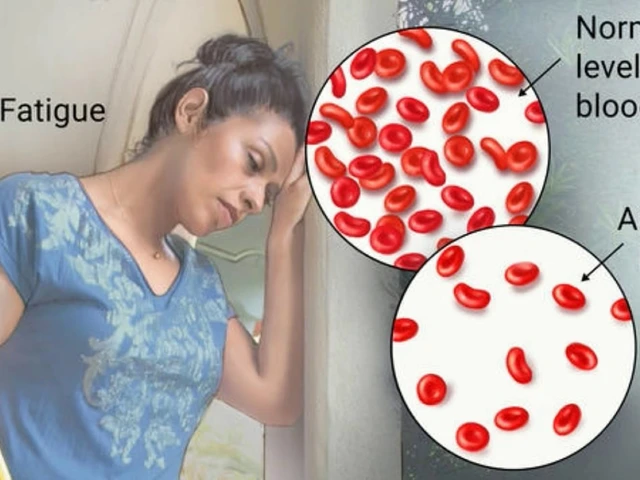Nasal Spray Selector Quiz
Nasonex is a prescription intranasal corticosteroid spray containing mometasone furoate monohydrate designed to treat allergic rhinitis, nasal polyps, and seasonal allergies. It works by reducing inflammation in the nasal passages, easing congestion, sneezing, and itchy eyes. FDA‑approved in 1999, Nasonex delivers 50µg per spray and is typically used once daily.
How Nasonex Works Inside Your Nose
The active ingredient, mometasone furoate, binds to glucocorticoid receptors in nasal mucosa, suppressing cytokine release and limiting the swelling that blocks airflow. Because the drug stays localized, systemic absorption is minimal-less than 0.5% of the dose reaches the bloodstream. Studies from the American Academy of Otolaryngology show a 30‑40% reduction in nasal symptom scores after two weeks of consistent use.
Key Attributes of Nasonex
- Dosage: 1 spray per nostril, once daily (50µg per spray)
- Onset of relief: 12‑24hours for steady‑state effect
- Potency: High; considered one of the most potent intranasal steroids per microgram
- Prescription status: Rx‑only in the U.S., OTC in several European markets
- Safety profile: Low risk of hypothalamic‑pituitary‑adrenal (HPA) axis suppression at recommended dose
Popular Alternatives on the Market
When doctors talk about “intranasal steroids,” they usually compare a handful of brands. Below are the most frequently prescribed alternatives, each defined with its own microdata block.
Fluticasone propionate is the active ingredient in the widely‑available Flonase nasal spray. It carries a slightly lower potency per microgram than mometasone but is approved for both adults and children aged 4‑+. The standard dose is 2 sprays per nostril once daily (50µg per spray).
Budesonide powers the Rhinocort Aqua spray. Budesonide is known for a faster onset-often noticeable within 6‑12hours-but its overall potency is modest compared with mometasone. Recommended dosing is 1-2 sprays per nostril once daily (32µg per spray).
Azelastine hydrochloride is the antihistamine component of the Astepro nasal spray. Though not a corticosteroid, azelastine offers rapid relief (within minutes) for itchy, watery eyes and sneezing, making it a favorite for acute flare‑ups. Typical dosing is 1 spray per nostril twice daily (137µg per spray).
Beclomethasone dipropionate appears as the Beconase AQ spray. It falls in the middle of the potency spectrum and is available OTC in many countries. The usual regimen is 1 spray per nostril once daily (50µg per spray).
Side‑Effect Landscape Across the Class
All intranasal steroids share a handful of common adverse events: nasal dryness, mild epistaxis, and occasional headache. Rarely, high‑dose or prolonged use can affect the HPA axis, leading to cortisol suppression. Antihistamine sprays like azelastine tend to cause a bitter taste and drowsiness in about 5% of users, but they avoid steroid‑related systemic risks. A 2022 meta‑analysis in the Journal of Allergy & Clinical Immunology concluded that the overall incidence of serious side effects is below 1% for all approved corticosteroid sprays.

Head‑to‑Head Comparison Table
| Attribute | Nasonex (Mometasone) | Flonase (Fluticasone) | Rhinocort (Budesonide) | Astepro (Azelastine) | Beconase (Beclomethasone) |
|---|---|---|---|---|---|
| Active ingredient | Mometasone furoate | Fluticasone propionate | Budesonide | Azelastine HCl | Beclomethasone dipropionate |
| Potency (relative per µg) | High | Medium‑high | Medium | Not a steroid (antihistamine) | Medium |
| Typical daily dose | 1 spray/nostril | 2 sprays/nostril | 1‑2 sprays/nostril | 1 spray/nostril (twice‑daily) | 1 spray/nostril |
| Onset of symptom relief | 12‑24h (steady state) | 12‑24h | 6‑12h | 5‑15min | 12‑24h |
| OTC availability (U.S.) | Prescription | OTC (12‑yr+) | OTC (12‑yr+) | Prescription | OTC (12‑yr+) |
| Common side effects | Dryness, mild bleeding | Dryness, mild bleeding | Dryness, mild bleeding | Bitter taste, drowsiness | Dryness, mild bleeding |
Decision‑Making Framework
Choosing the right spray isn’t a one‑size‑fits‑all exercise. Below is a quick checklist that maps patient priorities to the most suitable option.
- Maximum potency for chronic, year‑round symptoms: Nasonex or Flonase.
- Fast relief of acute flare‑ups: Azelastine (Astepro) or Budesonide for a quicker onset.
- Preference for OTC access: Flonase, Rhinocort, or Beconase.
- Concern about steroid exposure (e.g., children, pregnancy): Azelastine or low‑dose Budesonide.
- Budget‑conscious shoppers: Generic fluticasone and beclomethasone tend to be cheaper than mometasone.
Special Populations and Use‑Case Scenarios
Allergic rhinitis is an inflammation of the nasal mucosa triggered by allergens such as pollen, dust mites, or pet dander. For patients with persistent symptoms that interfere with sleep or work, a high‑potency steroid like Nasonex is often recommended because the anti‑inflammatory effect accumulates over days, providing lasting control.
When the main complaint is sudden sneezing and itchy eyes during a seasonal peak, an antihistamine spray such as Azelastine can be added on top of a low‑dose steroid, creating a “dual‑therapy” regimen that attacks both histamine release (quick) and inflammation (slow).
Children under 12 typically receive Budesonide or Fluticasone at reduced doses, as the FDA has approved those ages for OTC use. Nasonex can be prescribed for kids as young as 2, but providers often start with a lower‑dose fluticasone to assess tolerance.
Safety Tips & Common Pitfalls
Improper technique is the #1 reason users see bleeding or reduced efficacy. Aim the spray toward the outer wall of the nostril-not the septum-to avoid irritation. Allow the spray to dry before blowing the nose; otherwise, the medication can be expelled.
Never exceed the recommended dose. A 2021 safety alert from the FDA warned that prolonged use of >2 sprays per nostril per day can increase the risk of systemic cortisol suppression, especially in children.
Putting It All Together: Your Action Plan
- Identify your primary goal: continual control vs. rapid symptom relief.
- Match the goal to the drug class (potent steroid vs. antihistamine).
- Check prescription requirements and insurance coverage.
- Start with the lowest effective dose; monitor symptoms for 2‑3 weeks.
- Re‑evaluate side effects; adjust or switch if dryness or nosebleeds become troublesome.
- Consult your clinician before combining sprays; some combos require a wash‑out period.
By following this roadmap, you’ll land on the option that balances effectiveness, convenience, and safety for your unique allergy profile.

Frequently Asked Questions
Is Nasonex safe for long‑term use?
Yes. Clinical trials spanning up to 12months show no significant increase in systemic cortisol levels when the recommended dose (1 spray per nostril daily) is followed. Routine monitoring is advised for children and patients on chronic high‑dose regimens.
Can I use Nasonex and Flonase together?
Combining two intranasal corticosteroids offers no added benefit and raises the risk of local irritation and systemic exposure. If relief is insufficient, discuss switching to a different steroid or adding an antihistamine spray instead.
Which spray works fastest for a sudden pollen attack?
Azelastine (Astepro) delivers symptom relief within minutes because it blocks histamine receptors directly. For a steroid‑only approach, Budesonide tends to have the quickest onset among the corticosteroids, usually noticeable within 6‑12hours.
Is there a generic version of Nasonex?
As of 2025, mometasone furoate is still under patent in the United States, so only the brand‑name Nasonex is available. However, several international markets sell generic mometasone nasal sprays at lower cost.
What is the proper technique for applying Nasonex?
Gently blow your nose, tilt your head slightly forward, insert the nozzle, and aim the spray toward the outer wall of the nostril. Press the pump once, inhale gently through the nose, then repeat for the other side. Avoid sniffing hard, which can draw the medication down the throat.
Can I use these sprays while pregnant?
All intranasal corticosteroids are classified as pregnancy category C, meaning risk cannot be ruled out. Doctors often recommend the lowest effective dose, and many opt for fluticasone because of its extensive safety data. Always discuss with your obstetrician before starting any new medication.







Marie Green
September 25, 2025 AT 00:00Got a lot of people mixing up the spray technique, so here’s a quick rundown. After you blow your nose, tilt your head slightly forward and aim the nozzle toward the outer wall of the nostril, not the septum. That way you avoid the dreaded nosebleeds and get the medication where it belongs. Give it a gentle inhale and let the spray dry before you sniff again. Consistency is key – use it once daily at the same time.
TOM PAUL
September 25, 2025 AT 09:44Yo, I was on Flonase for a month, then switched to Nasonex on my doc’s advice and the difference is night‑and‑day. The congestion cleared up faster and I stopped waking up with a stuffy nose. If you’re hunting for that “still‑clear‑in‑the‑morning” vibe, give mometasone a shot.
Ash Charles
September 25, 2025 AT 15:17Listen up, if you’re still playing “maybe later” with the proper technique, you’re just wasting the drug. Apply the spray correctly, stick to the dosage, and you’ll see results in under a week – no excuses.
Michael GOUFIER
September 25, 2025 AT 22:14The comparative table elucidates that mometasone furoate (Nasonex) exhibits a higher potency per microgram relative to fluticasone and budesonide, whilst maintaining a comparable safety profile. Both agents share similar adverse events, primarily nasal dryness and minor epistaxis. Notably, azelastine diverges as an antihistamine, offering rapid symptom alleviation but lacking anti‑inflammatory action.
michael Mc Laughlin
September 26, 2025 AT 06:34Just a heads‑up – if you’re on a budget, the generic fluticasone from most big box stores costs a fraction of the brand name Nasonex and works just fine for most people.
Luke Schoknceht
September 26, 2025 AT 17:40Alright, let’s dive deep into why the “Nasonex vs. the rest” debate isn’t as black‑and‑white as some headlines suggest. First, the pharmacodynamics of mometasone give it a strong affinity for glucocorticoid receptors, which translates into a higher anti‑inflammatory punch per microgram. Second, the systemic absorption remains minuscule, so the risk of HPA‑axis suppression stays low when used as directed. Third, the onset of action, while not instant, typically stabilizes within a day, giving users a predictable window for symptom control. Fourth, the convenience factor matters – a single spray per nostril daily is easier to remember than a twice‑daily regimen. Fifth, insurance coverage often dictates whether patients can afford a prescription‑only medication, pushing many toward OTC alternatives like fluticasone. Sixth, the side‑effect profile is remarkably similar across the class, with dryness and occasional epistaxis being the most common complaints. Seventh, studies have shown that patients with chronic allergic rhinitis report better quality‑of‑life scores when on a high‑potency steroid like mometasone compared to moderate‑potency options. Eighth, the cost differential, though narrowing, still favors generic fluticasone in most markets, especially when factoring in pharmacy discount programs. Ninth, pediatric use is another consideration; while mometasone is approved for children as young as two, many clinicians start with fluticasone for its extensive safety data. Tenth, the formulation itself – Nasonex’s aqueous spray delivers a fine mist that coats the mucosa uniformly, potentially enhancing drug deposition. Eleventh, the convenience of a prescription can be a double‑edged sword, providing professional oversight but also adding a barrier to access. Twelfth, some patients report a bitter taste with azelastine, which is absent with corticosteroids, influencing adherence. Thirteenth, real‑world adherence rates often drop when regimens become complex, highlighting the appeal of once‑daily dosing. Fourteenth, the emerging data on combination therapy – a low‑dose steroid alongside an antihistamine – suggests synergistic benefits without a substantial increase in side effects. Fifteenth, clinicians should always tailor the choice to individual patient priorities, be it potency, speed of relief, cost, or safety concerns. Finally, the bottom line is that there is no universally “best” spray; the optimal choice hinges on a nuanced assessment of each patient’s unique situation.
mauricio gonzalez martinez
September 26, 2025 AT 21:50I stick with the cheap generic fluticasone and it does the job.
Christian Freeman
September 27, 2025 AT 02:50When we consider intranasal steroids, we’re really weighing the balance between local anti‑inflammatory efficacy and systemic exposure, a microcosm of the broader medical ethic of targeted therapy versus collateral impact.
julie shayla
September 27, 2025 AT 06:10Wow, profound – as if we needed another lecture on “balance” when the label already tells us the risks.
Super Mom
September 27, 2025 AT 13:24For anyone thinking about mixing a steroid with an antihistamine, the key is timing: use the steroid once daily as directed, and apply the antihistamine spray at a different time of day to avoid bitter taste overlap. This “dual‑therapy” can give you both rapid relief and long‑term control without increasing systemic absorption. Also, be sure to rinse your nostrils gently after using the antihistamine if you experience any lingering after‑taste.
Jean Tredoux
September 27, 2025 AT 16:10Big pharma keeps Nasonex behind a prescription wall to squeeze more cash out of patients.
cedric Gicquiaud
September 27, 2025 AT 20:20Actually, the prescription barrier exists because mometasone’s patent is still enforceable in the United States, meaning generic manufacturers cannot legally produce an identical formulation until the exclusivity expires, which is why you’ll only see the brand name on the shelves despite the drug’s long‑standing safety record.
Mason Grandusky
September 28, 2025 AT 02:27Yo, if you want the “king of the nose” vibe, Nasonex is the heavyweight champ – it packs a punch that’ll knock those allergies right out.
Spencer Riner
September 28, 2025 AT 07:27Many users appreciate the fact that the spray’s fine mist reaches deeper into the nasal passages, which can be a game‑changer for stubborn congestion that regular decongestants miss.
Joe Murrey
September 28, 2025 AT 11:54its realy easy to forget the right angle but once you get it, the results are awesome.
Tracy Harris
September 28, 2025 AT 17:44In the annals of otolaryngology, the advent of intranasal corticosteroids marks a pivotal epoch, heralding a transition from symptomatic palliation to targeted anti‑inflammatory mastery.
Sorcha Knight
September 28, 2025 AT 21:20And yet, despite all the science, we all know the true battle is against the morning sniffles – fight on, brave sneezer! 😤
Jackie Felipe
September 29, 2025 AT 04:00i think the best tip is to keep the bottle upright, otherwise the spray wont work properl.
debashis chakravarty
September 29, 2025 AT 08:44Correction: “properly” should be used instead of “properl,” and “won’t” requires an apostrophe. Accurate language reflects the precision we expect from medical guidance.
Daniel Brake
September 29, 2025 AT 14:17Considering the variety of options, reflecting on personal symptom patterns can guide a smarter, more sustainable choice.